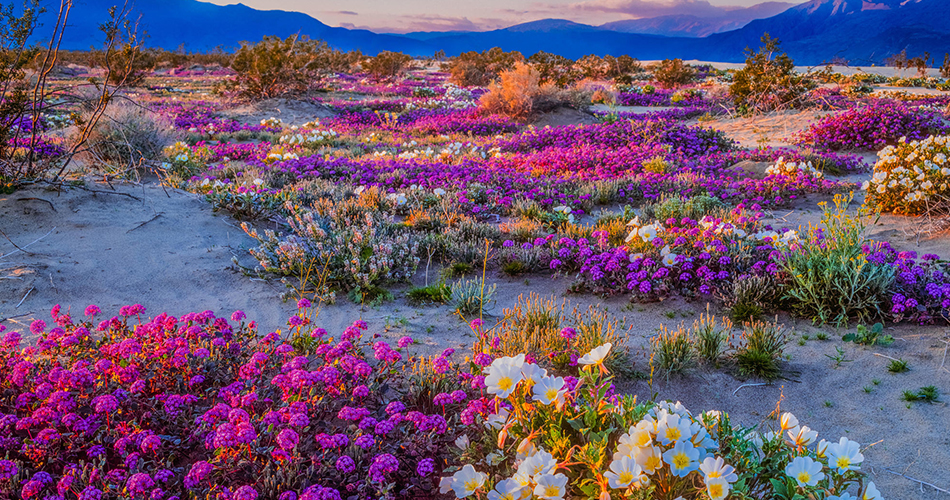Wildflowers are plants that grow without any care from a man. Some wildflowers are just as beautiful as garden flowers or hothouse flowers.
Many types of wildflowers are very hard to grow and sometimes it is impossible to grow them in gardens. The flowers that grow in the woods need acid soil. Most of them are shade-loving wildflowers. Some can only grow in soil made of rotted oak leaves, or pine needles, or a very special material.
For example, Indian pipes (Monotropa uniflora) need a certain kind of fungus in the soil. The soil also must consist of rotted plant material because these white wildflowers have no chlorophyll (green coloring matter) in their stalks and no leaves so they cannot make their own food. Some of the other wild plants need a long time to grow from seeds to the blooming stage. An example is the dogtooth violet or trout lily, which takes seven years to grow big enough to bloom. Few gardeners want to wait that long. Fringed gentian seeds must fall in an exact place to grow or they die very quickly.
Growing wildflowers indoors
Many other types of wildflowers are rather beautiful for growing indoors, but in garden conditions, they may bloom only one day or grow too small. However, in the woods, meadows or fields, they are big and bloom for a long time and can bring much more pleasure than in garden conditions.
Other types of wildflowers grow in gardens very well. The many varieties of bright wild peas and beans that bloom on southern wastelands and meadows grow so fast that they can quickly choke out garden flowers. Goldenrod and wild asters grow over most of North America and Canada in fields, woods, and roadsides. They are so common roadside flowers that few people would like to plant them.
Of course, some kinds of wildflowers are planted in gardens. All garden flowers were once wild. The poinsettia is a wild plant of tropical Mexico and Central America. Geraniums grow wild in South Africa. It is interesting to find the wild ancestors of cultivated plants.
Some kinds of wildflowers that are wild in one part of North America are planted in homes and gardens in other parts. Lupines grow wild in the west but sometimes they are cultivated in eastern gardens. Meadows and fields of wild California poppies brighten the western countryside. In the east, California poppies may be carefully planted in gardens.
Enjoying most beautiful wildflowers
The beautiful lovely plants that bloom in early spring in the woods often give more pleasure than any cultivated plant. For example, the cacti that grow in the southwest United States, and the marsh marigolds (cowslips) that grow in wet places from the Carolina to the Arctic. They add bright spots of color in the deserts and marshes.
Perhaps the best way to enjoy wildflowers is to learn to know where they usually grow. Finding a patch of bloodroot, arbutus or hepatica in wood can give a lot of pleasure. Finding some of the wild orchids like pink lady’s slipper or the showy orchids of the spring is like finding a hidden treasure.
Sometimes when people find these flowers they feel that they must pick them and take them home with them. Usually, this is selfish and often against the law. The petals of the bloodroot drop as soon as the flower is picked. Most woodland flowers wilt when they are carried in warm hands. Hepatica, spring beauty and many others are too small to make good bouquet even if they do not wilt. Picking the flower also keeps the plant from making seeds and new plants and other people won’t be able to enjoy them.


Be First to Comment